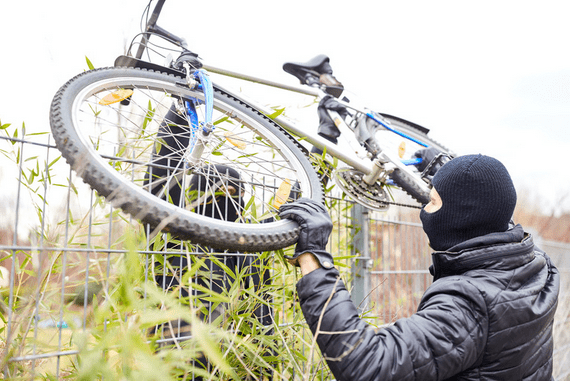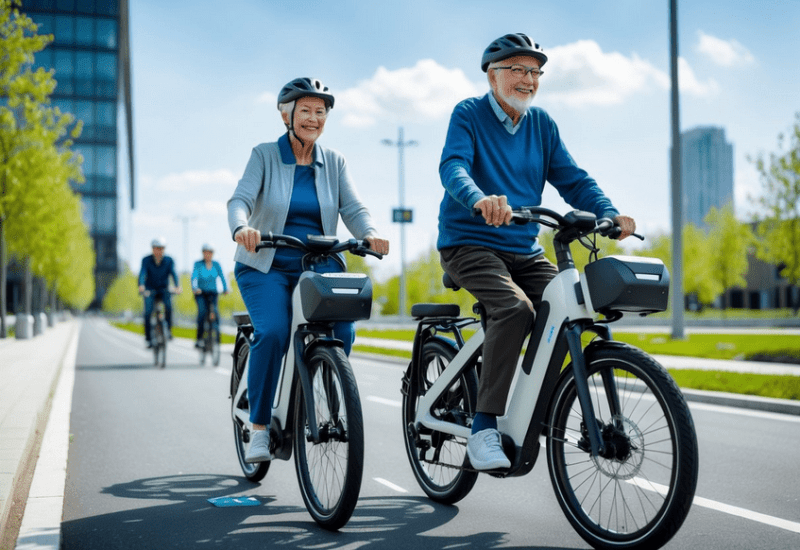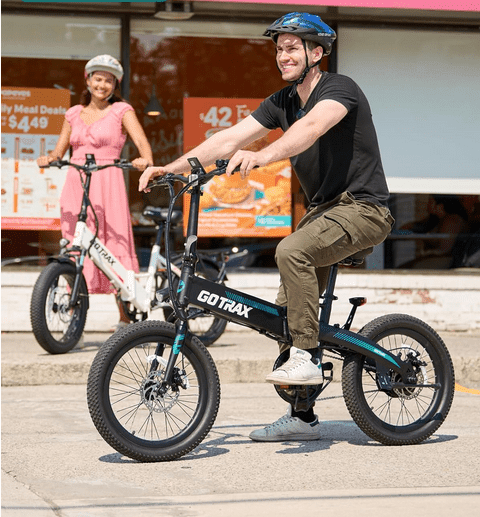ban planning, preventing bike theft in 2025 has become both more challenging and more achievable. High-quality locks and robust security measures are essential in safeguarding bicycles against thieves. This makes choosing the right lock just as crucial as where and how the bike is parked.

Modern strategies for preventing bike theft include more than just physical devices. Community-based solutions like bike registration and public awareness campaigns play a vital role in curbing thefts. Cyclists can benefit from both personal vigilance and societal efforts to enhance bike safety.
Understanding the role of law enforcement and legal frameworks also impacts bike security. As cities adapt to growing bike usage, learning about these measures can be invaluable for riders who wish to keep their bicycles safe.
Key Takeaways
- High-quality locks are essential for bike security.
- Public awareness and community solutions reduce theft.
- Law enforcement and legal measures support bike safety.
The Landscape of Bike Theft in 2025
Bike theft remains a significant issue in urban and suburban areas, with theft rates continuing to affect commuters. New forms of technology in tracking and locking offer hope for reducing incidents, even as thieves develop more sophisticated methods.
Understanding Current Theft Trends
In 2025, bike theft is predominantly occurring in public spaces like streets and parks. Statistics from organizations such as Garage 529 indicate that about 2 million bikes are stolen annually in the U.S. Approximately 60% of these thefts take place in public areas, while 40% occur in private spaces such as garages.
Thieves often target bikes left overnight, with reports showing an increase in such incidents. Additionally, there is a noted preference for stealing unlocked bicycles, emphasizing the importance of reliable locking systems. Data insights reflect a need for increased public awareness and preventive strategies to combat this ongoing problem.
Impact on Commuters and Urban Environments
Bike theft heavily impacts commuters who rely on bicycles for daily travel. The loss of a bike can disrupt routine commutes and strain financial resources due to replacement costs. Such issues emphasize the need for secure parking solutions in urban settings.
Urban environments suffer from a decrease in cycling, which affects traffic flow and promotes vehicle congestion. With fewer people willing to rely on bikes due to theft fears, cities lose out on the environmental benefits of a cycling culture. Consequently, local governments are exploring more secure bike parking and comprehensive databases for tracking and recovering stolen bikes.
Advancements in Theft Methods
Thieves in 2025 are employing more sophisticated tools and techniques to bypass security systems. As technology evolves, so do the methods to counter it, making traditional locks often inadequate.
Reports indicate that some thieves use advanced tools to cut through even heavy-duty locks. 529 Garage highlights the importance of innovative anti-theft devices, such as locks with 10,000 possible combinations. The adaptability of thieves necessitates constant updates to security measures, urging bike owners to invest in cutting-edge technology to protect their possessions.
Technological Innovations in Bike Security
In 2025, bike security has seen significant advancements thanks to new technologies. These innovations focus on preventing theft through smart locks, tracking, biometric systems, and alarm alerts, making it much harder for thieves to succeed.
Smart Locks and Tracking Devices
Smart locks have become a game-changer in bike security. These locks connect to a smartphone app, allowing real-time access. Users can lock or unlock their bikes remotely. Some smart locks even come with GPS tracking capabilities.
A GPS tracker helps locate a bike if it’s stolen. This adds a layer of protection and makes it more difficult for thieves to get away with bike theft. Smart locks often include tamper alerts that notify the owner if the lock is being tampered with.
Biometric Authentication Systems
Biometric authentication is another leap forward in bike security. Instead of keys or combinations, these systems use fingerprints or facial recognition. This technology ensures that only the bike owner or trusted individuals can unlock it.
Fingerprint scanners are commonly integrated into the bike's locking mechanism. This feature adds convenience while enhancing security, as biometric data is unique to each person. As a result, the risk of unauthorized access is significantly reduced.
Alarm and Alert Systems
Alarms and alert systems are another key area of technological innovation in bike security. These systems are designed to scare off potential thieves through loud alarms.
Many systems integrate with mobile apps to send instant notifications to bike owners if their bike is moved without permission. Some alarms also work with GPS trackers to provide real-time location data. This combination can increase the chances of recovering a stolen bicycle quickly and effectively.
Best Practices for Individual Cyclists
Cyclists can reduce the risk of theft by focusing on smart locking methods, choosing secure parking locations, and employing personalized anti-theft tactics. Each part is crucial in keeping bicycles safe from thieves.

Effective Locking Techniques
Using a high-quality lock is essential. Cyclists should invest in U-locks or chain locks with high-security ratings. It's important to lock the bike frame and both wheels to a solid, immovable object. Avoid cheap cable locks as they are easily cut. Positioning the lock so that it is hard for thieves to access gives extra protection.
Always ensure the lock is tight, leaving no space to wiggle or leverage tools. Double-locking with a combination of different lock types can provide an added layer of security. Engaging multiple locking positions is often more difficult for thieves to breach.
Safe Parking Habits
Where a bike is parked can make a big difference. Cyclists should aim to park in well-lit, high-traffic areas. These spots reduce the chance of theft since thieves prefer isolation and darkness. Urban spaces with surveillance cameras or security patrols offer more protection.
Avoid leaving bikes unattended for long periods. If possible, vary parking locations to avoid patterns that thieves might notice. Utilizing designated bike racks or parking areas rather than random spots adds a level of formality and perceived safety.
Personal Anti-Theft Measures
Cyclists can take additional steps by personalizing their anti-theft strategies. Bike registration with local authorities can aid recovery if it's stolen. Cyclists should keep a record of the bike's serial number and take clear photos of it.
Use unique identifiers like stickers or colorful tape to make the bike easily recognizable. Riders may also consider GPS trackers to monitor the bike's location. Being vigilant about security and spreading awareness through social media or community events can foster a culture of bicycle security.
Urban Planning and Community-Based Solutions

Urban planning and community initiatives play a crucial role in preventing bike theft. By designing secure bike racks and implementing community programs, individuals can safeguard their bicycles. Local policies and incentives are also important in creating safe environments for cyclists.
Designing Theft-Proof Bike Racks and Storage
Cities can reduce bike theft by investing in well-designed bike racks and storage solutions. Theft-proof racks should be made of tough materials, and include bends or loops that make cutting difficult. Bike lockers offer another layer of protection, especially for commuters and those who regularly use more expensive bikes.
Placing bike racks in visible, busy areas discourages theft. Proper lighting and security cameras can also deter thieves. Installing racks near public facilities and transport hubs increases accessibility and safety. When bike storage is integrated with other transportation infrastructure, it creates a seamless experience for cyclists, encouraging more people to ride.
Neighborhood Watch and Community Programs
Community programs and neighborhood watch initiatives are effective ways to tackle bike theft. Residents can organize groups to monitor public bike parking areas. Regular patrols create a visible presence that deters potential thieves. Engaging local businesses to participate can further strengthen these neighborhood watch efforts.
Community workshops educate people about bike security. These events can teach best practices for locking bikes effectively. An active community involvement also fosters stronger bonds among residents, creating a safer overall environment. Through social media and local bulletin boards, communities can quickly share information about suspicious activities, making it harder for thieves to operate unnoticed.
Policy Interventions and Incentives for Secure Parking
Policies play a key role in enhancing bike security. Cities can implement parking standards that require new buildings to include secure bike storage. Offering tax incentives to businesses that provide bike parking encourages more locations to install safe storage options.
Local governments can fund public bike hubs equipped with monitored parking and repair stations. These facilities offer safe places for cyclists to leave their bikes, reducing the risk of theft. Subsidized bike locks or community programs that provide discounted security equipment can further empower cyclists to protect their property effectively.
Role of Law Enforcement and Legal Frameworks
Law enforcement and legal measures play a key role in reducing bike theft. Specialized training for police, clear legislation, and working with international agencies are vital elements in this effort.
Police Training and Specialized Bike Theft Units
Police departments are focusing more on training officers to handle bike thefts efficiently. Specialized units are being developed to address this issue. These units concentrate on recovering stolen bikes and catching thieves. Officers are trained to recognize bicycle theft patterns and use technology to track stolen bikes effectively.
Increased cooperation between law enforcement and community organizations is also part of this strategy. By closely monitoring high-theft areas and using surveillance tools, police aim to prevent thefts before they happen. This training and specialization improve recovery rates and help deter future crimes.
Legislation and Penalties for Bike Theft
Stronger laws and penalties for bike theft are crucial in deterring potential thieves. Legislation, like enhanced fines and longer jail terms, sends a clear message that bike theft is taken seriously.
State and local governments are reconsidering laws to close loopholes that allow thieves to operate with minimal risk of punishment. This also includes adjusting punishment based on the value of the stolen bike, reflecting its importance to the owner.
Incorporating bike theft into broader property crime laws can further emphasize its significance, raising public awareness and encouraging cautious behavior among potential offenders.
Collaboration with International Law Enforcement
Global cooperation is necessary to handle bike theft because stolen bikes are sometimes moved across borders. International law enforcement collaborations improve recovery rates and lead to more effective tracking.
By working with agencies like Interpol, local police can gain access to databases that help in identifying stolen bikes quickly. Sharing data on theft patterns and techniques also aids in forming comprehensive strategies against bike crime networks.
This type of collaboration allows for a more united and coordinated effort in fighting bike theft at a larger scale, ensuring that borders do not shield criminal activities.
Education and Public Awareness Campaigns
Raising awareness about bike theft prevention is essential for reducing incidents. Effective campaigns involve educating cyclists and engaging with the public through various platforms.
Workshops and Training for Cyclists
Workshops provide hands-on experience and knowledge for cyclists, focusing on practical methods to prevent theft. These sessions often cover how to properly lock a bike using U-locks and chains, choosing secure locations, and identifying high-theft areas.
Training programs might also offer advice on marking and registering bikes, which helps in recovering stolen property. Local bike shops, community centers, and partnerships with law enforcement can host these workshops. Cyclists gain access to real-world insights and actionable guidance, fostering a safer bike-riding community.
Awareness Through Media and Online Platforms
Media campaigns play a crucial role in spreading awareness about bike theft. Using social media, websites, and local news, organizations can reach a broad audience. These campaigns often share tips on securing bikes, promoting new technologies like GPS trackers, and cautionary tales highlighting the importance of vigilance.
Videos, infographics, and engaging content make these campaigns accessible and relatable. Online platforms allow for the quick dissemination of alerts and updates, creating an informed community. Collaborations with influencers and local authorities boost the campaign's reach, enhancing public knowledge and advocacy against bike theft.
Future Outlook and Predictive Measures
As bike theft prevention technology advances, the future holds promising developments to counter emerging threats. Key strategies involve anticipating potential security challenges and leveraging predictive analytics.
Anticipating Future Security Challenges
Bike theft methods are becoming more sophisticated, requiring ongoing innovation in security. Thieves increasingly use tools and technology that bypass conventional locks, prompting a need for smarter security solutions. Anticipating these future challenges involves research and development in areas like biometric locks and location-based security features.
Urban environments might face challenges specific to public bike-sharing systems, requiring tailored approaches. Cities will need to invest in robust infrastructure and real-time monitoring systems to deter theft. These efforts should focus on covering more ground and integrating with existing urban systems to promote a safer biking culture.
Developing Predictive Analytics Tools
Predictive analytics will play a crucial role in bike theft prevention by identifying patterns and trends. These tools analyze data from various sources, such as past theft incidents, environmental factors, and seasonal trends, to predict theft hotspots.
Leveraging data from smart locks and bike-sharing systems can further refine these analytics. Machine learning algorithms may enhance accuracy, enabling timely decision-making for law enforcement and city planners. By implementing these predictive tools, communities can proactively adjust resources and infrastructure to areas with higher theft risks, ultimately reducing incidents and improving bike security.
Industry Collaboration and Innovations
The fight against bike theft in 2025 is being driven by strong industry partnerships and investments in security technology research. Companies are working together to create robust solutions that protect cyclists’ interests and ensure quick recovery of stolen bikes.
Partnerships with Cycling and Tech Companies
Collaboration between cycling companies and tech providers is pivotal. Project 529’s partnership with Hubtiger is a prime example. This collaboration integrates bike registry platforms with cloud-based software used by numerous bike shops. It not only helps deter theft but also enhances recovery if bikes are stolen.
Moreover, companies like Bikeep are innovating large-scale solutions. They were founded by individuals who experienced bike theft firsthand and are committed to creating systems that effectively prevent such crimes. By joining forces with tech companies, cycling firms are making it easier to secure bikes, track them effectively, and recover stolen property.
Investing in Research and Development
Investing in research and development is crucial for creating cutting-edge bike security technologies. Companies are focusing on advanced tracking systems and mobile apps that alert owners to unauthorized movements. For example, BikeFinder provides technology that tracks stolen bikes and assists owners in working with police for recovery.
New security trends also focus on e-bikes, which are highly targeted by thieves. The evolution of e-bike security involves studying historical theft trends to prevent future thefts. This research drives the creation of innovations like detachable components that discourage thieves targeting bike parts. By investing in R&D, the industry ensures that security measures are always one step ahead of criminals.
Frequently Asked Questions
Bicycle theft prevention in 2025 involves cutting-edge technologies and strategic methods. Understanding the latest tools and tactics can enhance the security of bikes, motorcycles, and other two-wheeled vehicles.
What are the latest advancements in bike theft prevention technology?
Innovations in bike security include smart alarms that activate when tampered with, and advanced chains made with durable materials. Many devices now feature mobile app integration, allowing riders to monitor their bike's security from a distance.
How effective are GPS locks in preventing bike theft?
GPS locks offer real-time tracking, making it easier to locate stolen bikes. While they won't physically prevent theft, their ability to track stolen bikes increases the likelihood of recovery.
Are certain bike colors less likely to be targeted by thieves?
Research shows that thieves typically target bikes based on brand and type rather than color. However, bright and unique colors can stand out, which might deter theft due to increased visibility.
What strategies can I adopt to make my motorcycle more secure?
Using multiple locks can increase security. Pairing a heavy-duty chain with a U-lock is effective. Parking in well-lit areas and utilizing alarms or trackers are also beneficial strategies.
Which bike theft insurance policies offer the best coverage?
Insurance policies vary in coverage options. It's wise to seek policies that cover theft, damage, and liability. Reviewing the fine print ensures understanding of the terms and conditions. Recommendations often include companies with strong reputations for customer service and comprehensive plans.
What methods do experts recommend to secure your bike in public areas?
Experts advise locking both the frame and wheels to a fixed object. Using quality locks reduces the risk of tampering. Avoiding isolated locations and choosing areas with high foot traffic can also help keep bikes safe.
DISCLAIMER
This document is provided for general information purposes only and should not be relied upon as providing legal advice, technical, or specific operational guidance to the reader, whether as to the practices described in the document or the applicable legal requirements and regulations. justelectricbikes.com expressly disclaims any responsibility for liability arising from or related to the use or misuse of any information in this document.










